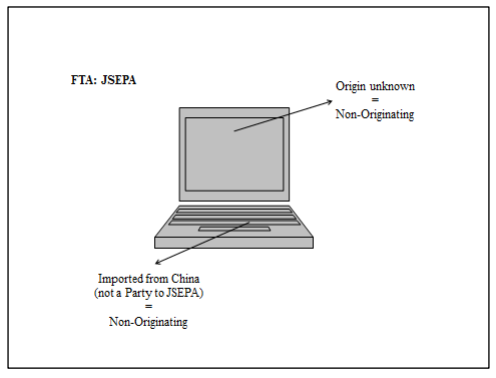A good is considered to be originating if it meets the origin criteria stipulated
in the Rules of Origin (ROO) chapter of an Free Trade Agreement (FTA).
What is an originating good?
An originating good in an exporting Party can be broadly classified under
3 categories
a) A good that is Wholly Obtained i.e. wholly grown or produced;
b) Goods produced exclusively from originating materials; or
c) A good that is manufactured using non-originating materials.
What is an Non-originating good?
Non-originating materials are materials/components –
a) Imported from a country that is not a Party to the Free Trade Agreement (FTA);
b) Produced in one of the Parties to the FTA but are not able to meet the
Rules of Origin under the FTA; or
c) The origin of goods cannot be determined.
Here is an example of a Laptop.
The monitor is imported from some country and Origin is unknown.
The keyboard part is imported from a country that is not a Party to the FTA.
With this condition, this Laptop may not be considered as originating goods,
even if it has been manufactured in a Party to the FTA.

From Non-originating to originating
Goods that are produced using non-originating materials will have to undergo
substantial transformation in a country for the good to be qualified as originating.
The methods used to measure the transformation change are:
a)Change in Tariff Classification(CTC)
b)Qualifying/Regional Value Content(QVC or RVC)
c)Specific manufacturing or Processing(SP)
These 3 methods can be used in combination or standalone, depending on the origin
criteria(on) for the good in a Free Trade Agreement (FTA). The origin of these goods would
be dependent on the country where the last substantial transformation is performed.
More details on the origin criteria are provided in “What is Origin Criteria”.
Images retrieved from:Handbook on Rules of Origin for Preferential Certificates of Origin
